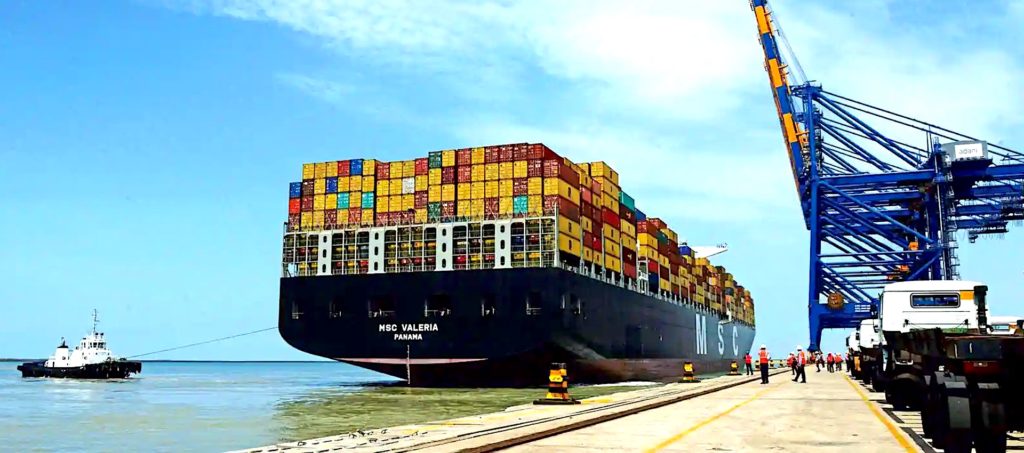Photo courtesy of Mint
South Asia and East Asia trade is growing amid global uncertainty. Alongside an IMF program, Sri Lanka should adopt pro-trade reforms to tap into this source of dynamism to tackle its terrible economic crisis. Doing so means improving the betting odds on Sri Lanka avoiding a lost development decade and untold misery for its people.
On February 4 Sri Lanka celebrated its 75th anniversary of independence from British rule. With the country amid a crippling economic crisis and a fall in per capita income, Sri Lankans have mixed views on whether there was much to celebrate. They do agree, however, on re-doubling policy efforts to tackle the economic crisis and build a prosperous, inclusive economy for future generations.
An IMF program is necessary to stabilize the economy and enable Sri Lanka to borrow prudently from abroad again but no panacea. As China is yet to provide assurances on debt sustainability, IMF Board approval of a US$3.9 billion IMF program over four years may take some time. Trading more with dynamic Asia economies is a complementary pathway for Sri Lanka to earn foreign exchange to pay for essential imports like food, fuel, medicines and inputs for export industries. Regional trade will also expose the economy to competition to facilitate economic restructuring, improve resource allocation, provide economies of scale and a greater choice of goods for consumers.
My recent paper in an IMF book, South Asia’s Path to Resilient Growth, argues that South Asia’s disappointing trade integration means trading more with dynamic East Asia makes economic sense. A strong base exists; since the 1990s, South Asia-East Asia trade and free trade agreements (FTAs) have gathered pace and are linked to India’s trade re-aligning towards East Asia through its Look East and Act East Policies, South Asia adopting economic reforms and China’s offshoring of global supply chains to the rest of Asia. Although from a small base, total merchandise trade between South Asia and East Asia (in US dollar terms) grew at about 10% annually between 1990 and 2018 and could reach to nearly $500 billion over the next few years. The few FTAs linking South Asia and East Asian economies could rise to 30 by 2030.
In addition, regional trade in Asia is recovering after the COVID-19 pandemic and has opened opportunities for South Asian economies to participate in global value chains and services trade.
What does Sri Lanka need to do?
First, gradually reduce barriers to imports which have risen since the 2008 global financial crisis. Export promotion must become a key economic goal in Sri Lanka. This requires ensuring a highly competitive exchange rate; undertaking gradual and transparent import tariff reforms geared to exports; implementing stroke of the pen cutting red tape strangling exporting firms; and digitizing customs and tax administration. Adjustment aid to losing sectors to reallocate factors of production and re-training of workers promotes gains from trade and mitigate income inequality.
Second, improve efforts to attract foreign investment in special economic zones (SEZs). The basics of ensuring macroeconomic and political stability, adopting transparent investor regulations and upgrading worker skills must become the core of the investment policy. Also refine plans for merging the state run Board of Investment (BoI) and the Export Development Board (EDB). Generous fiscal incentives need streamlining as they only matter on the margin in the locational decisions of multinationals, and long tax holidays deprives debt-ridden Sri Lanka of vital tax revenue. Moreover, the management of existing Export Processing Zones (EPZs) (e.g. those at Katunayake, Biyagama and Hambantota) should be hived off from the BoI and offered as a management contract on a transparent tender basis to international companies with a track record of managing SEZs. This would enable the new institution to focus on export and investor marketing/facilitation.
Third, pursue tailored FTA strategies to gain market access, join supply chains in East Asia and insure against rising protectionism. Sri Lanka has limited capacity and credibility in FTA negotiations. In such circumstances, a strategic approach maybe worthwhile. Sri Lanka needs restore its tarnished reputation as a trusted FTA partner while building FTA negotiations capability through learning by doing. As an initial step, the country should enforce its troubled FTA with Singapore and upgrade its FTA with India to cover more trade in goods, trade in services, investment, trade facilitation and government procurement. Next would be an FTA with Bangladesh as Sri Lankan garment firms have already opened production facilities in that country in response to demands from their buyers and competitive wages. Sri Lanka should also improve tariff preference use by better preparing business on navigating complex rules of origin in FTAs and including new trade issues relevant to global supply chains in future FTAs.
Fourth, support Bay of Bengal Initiative for Multi-Sectoral Technical and Economic Cooperation (BIMSTEC) reform towards a stronger trade orientation. India and Thailand are emphasizing BIMSTEC to foster Asian regional cooperation possibly extending across the Indo-Pacific. Reforms include better resourcing the BIMSTEC Secretariat, pushing to conclude the long running BIMSTEC FTA and building trade policy capacity. Sri Lanka can gain by supporting these reforms and creating a national expert group to devise a plan to improve trade with BIMSTEC economies.
Regional trade in Asia is a growth opportunity for Sri Lanka amid uncertainty. To realize this opportunity, alongside an IMF program, Sri Lanka needs to adopt reforms to usher in a more export oriented, market friendly economy. This means shifting from its comfort zone of an outdated inward oriented, state dominated economy. Doing so means improving the betting odds on Sri Lanka avoiding a lost development decade and great hardship for its people.
